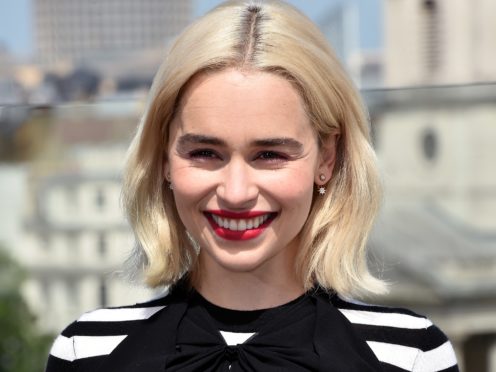Game Of Thrones star Emilia Clarke has broken a long-held silence to reveal she survived a life-threatening stroke.
The actress suffered a potentially fatal brain haemorrhage in 2011 before being having major surgery that left her unable to recall her own name.
Clarke, who plays Daenerys Targaryen in the fantasy TV series, lived with a time-bomb aneurysm in her skull for three years before again suffering a bleed in her brain.
Doctors immediately operated by opening up her skull.
Clarke has launched SameYou, a charity aimed at supported young people with brain injuries, and help them to access resources.
She said she wants to break her silence over her near-fatal brain injuries to help others who are suffering from the “invisible illness”.
“I know from personal experience that the impact of brain injury is shattering,” Clarke said.
“Recovery is long-term and rehabilitation can be difficult to access.
“Brain injury can be an invisible illness and the subject is often taboo.
“We must help young adults take control of their recovery and allow them to open up without fear of stigma or shame.”

The actress was making inroads as the fearsome queen Daenerys in Game Of Thrones when her workout was interrupted by enormous pressure on her brain.
She wrote in The New Yorker: “I reached the toilet, sank to my knees and proceeded to be violently, voluminously ill.
“Meanwhile, the pain – shooting, stabbing, constricting pain – was getting worse.
“At some level, I knew what was happening – my brain was damaged.”
She was revealed to have suffered a subarachnoid haemorrhage, a kind of stroke, and underwent surgery. Many victims do not survive the initial haemorrhage.
When she awoke from surgery she could not remember her name, and the long road to recovery began.
She was told she still had an aneurysm in her skull but chose not to have it removed.
Clarke wrote: “Let’s face it, I’m an actor. Vanity comes with the job. I spent way too much time thinking about how I looked.”
She again underwent surgery 2013 after suffering a bleed on the brain and over the years has made a full recovery.
The actress now wants to support others who have suffered the same fears and pains.
She said: “The degree to which people can adapt and face the future after neurological trauma is dependent on the quality and provision of rehabilitation care
“While I was recovering, I saw that access to integrated mental and physical health recovery programs are limited and not affordable for all.
“I am determined to help.”
SameYou raises funds and advocates for a “revolution in neurorehabilitation” provision for young adults.
